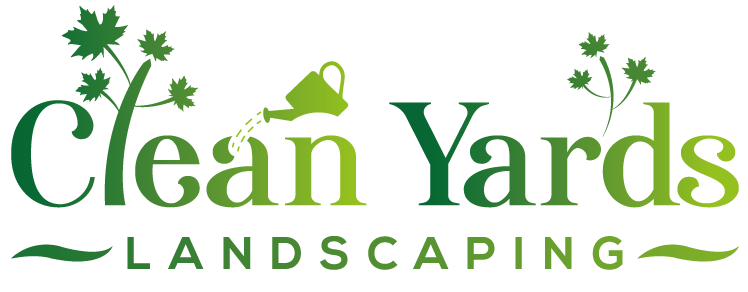Manotick Gardeners: Spring Pruner Care Prevents Disease
Ready for a beautiful, healthy garden this year? Get started with a free quote!
Request Your Free QuoteQuick Guide to Healthy Pruning
- Clean pruners prevent disease spread (fungi, bacteria).
- Use the right tool: Bypass for live wood, Anvil for dead wood.
- Follow 5 steps: Remove debris, wash, disinfect (alcohol/bleach), dry thoroughly, lubricate.
- Sharp tools make clean cuts that heal faster and require less effort.
- Store tools clean, dry, and oiled, especially over winter.
Introduction: Wake Up Your Garden (and Your Pruners!), Manotick!
Alright, Manotick, let's face it – we've all spent enough time hibernating! As the last stubborn patches of snow finally retreat across Ottawa, our gardens are stirring. You can almost hear those sleepy perennials yawning, right? Before you rush out in gardening glee, maybe grabbing a coffee in Greely or planning your Kars landscape project, let's talk about one of the *most* important spring rituals: pruning.
Think of it as your garden's gentle wake-up call and haircut rolled into one. But here’s the thing: grabbing those pruners you tossed in the shed last fall without a second thought is a recipe for trouble. Dirty or dull tools can spread nasty plant diseases faster than gossip at a village fair! Fungal spots, blights, and other unwelcome guests *love* hitching a ride on uncleaned blades, especially with our sometimes damp Ottawa spring weather. For tips on managing Ottawa weather effects, check out our About Us page detailing our local expertise.
So, consider this your friendly nudge. Proper spring pruning combined with *clean* tools is your secret weapon for a vibrant, healthy garden this year. Don't worry, we’re not just here to point fingers at dusty secateurs! We’re about to dive into the simple, practical steps to get your tools sharp, sanitized, and ready for action, ensuring your garden maintenance efforts lead to happy plants, not headaches. Let’s get started!
The 'Silent Spreaders': Why Dirty Pruners Are Bad News for Ottawa Valley Gardens
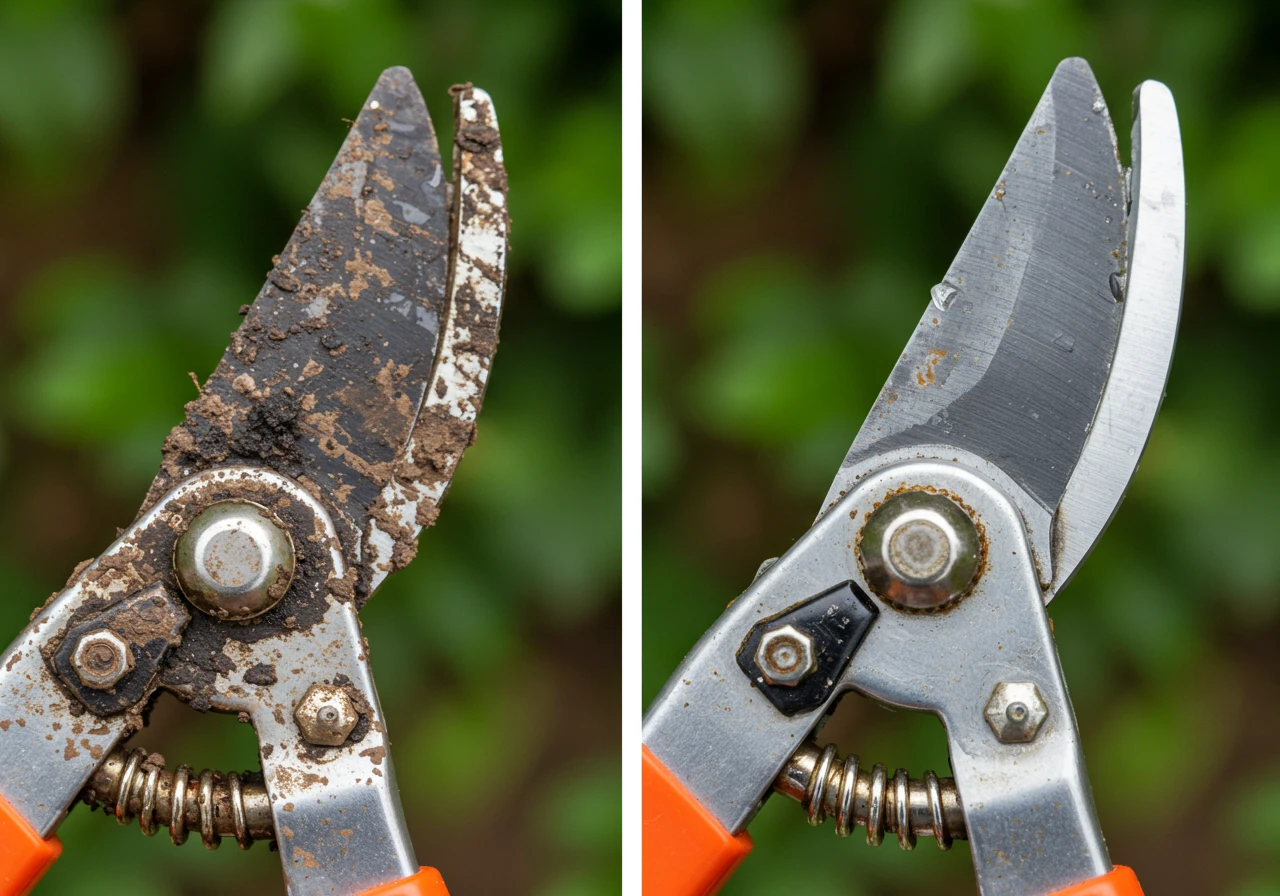
Okay, let's talk shop – specifically, *dirty* shop tools. You know those trusty pruners, loppers, or shears you use? If you’re not cleaning them regularly, they could be acting like tiny, sneaky villains in your garden, earning the name 'silent spreaders'. It sounds dramatic, but it's true! Our Yard Transformations showcase how healthy practices lead to stunning results.
Think about it this way: when you prune a plant, you create an open wound. It’s like a little cut. Now, imagine using a cutting tool that just snipped off a branch infected with something nasty – say, black spot on a rose or maybe fire blight, which can be a real headache for fruit trees in areas like Osgoode or Metcalfe. Those microscopic troublemakers – bacteria, fungi, even viruses – stick to the sap and debris left on the blade. Our Metcalf Yard Cleanup Service often deals with the aftermath of plant diseases.
When you move to the *next* plant and make a fresh cut with that same dirty tool, you're basically giving those pathogens a direct ride into the plant’s vulnerable tissue. It’s like a surgeon using a dirty scalpel – not a good situation! You could unknowingly spread disease from one plant to your entire hedge or flowerbed before you even notice symptoms. This is why professional services like our Ottawa Garden Clean Up Service always emphasize tool hygiene.
Our Ottawa Valley climate, with its sometimes damp springs and humid summers, creates the perfect playground for many common plant diseases. Fungal spores and bacteria just *love* moisture. A wet leaf surface combined with a fresh pruning cut is practically an open invitation for infection. Keeping tools clean breaks this cycle of transmission. This complements other good practices like ensuring proper watering techniques; our tips on Manotick Irrigation Checks to Save Water This Summer can help you water efficiently without encouraging disease.
Preventing the spread is often easier than curing the disease. Removing infected material promptly is crucial, and a good garden cleanup routine helps immensely. Both thoughtful Manotick Fall Cleanup & Winter Lawn Prep and following a detailed Manotick Fall Cleanup & Winter Garden Prep Guide can significantly reduce the amount of disease spores overwintering in your yard. Choosing disease-resistant plant varieties when planning your space is another smart move – something to consider during the Manotick Garden Design: Creating Your Dream Backyard process.
So, the simple act of cleaning your tools isn't just about tidiness; it's a fundamental part of responsible gardening and plant health care. Don't let your pruners become silent spreaders! If disease problems seem overwhelming or you need help with maintenance, exploring professional Landscaping & Gardening Services is always an option. We also offer specialized Marionville Garden Clean Up Service for focused attention.
Know Your Snips: Choosing and Using the Right Pruning Tools
Okay, let's talk tools! Walking into a garden center can feel a bit overwhelming with all the shiny snips and choppers calling your name. Choosing the right pruning tool isn't just about looking like a garden ninja (though that's a bonus!); it's crucial for your plants' health and your own comfort. Using the wrong tool is like trying to chop veggies with a butter knife – frustrating and likely to cause damage. Proper tool selection is as important as Landscaping Material Selection for project success.
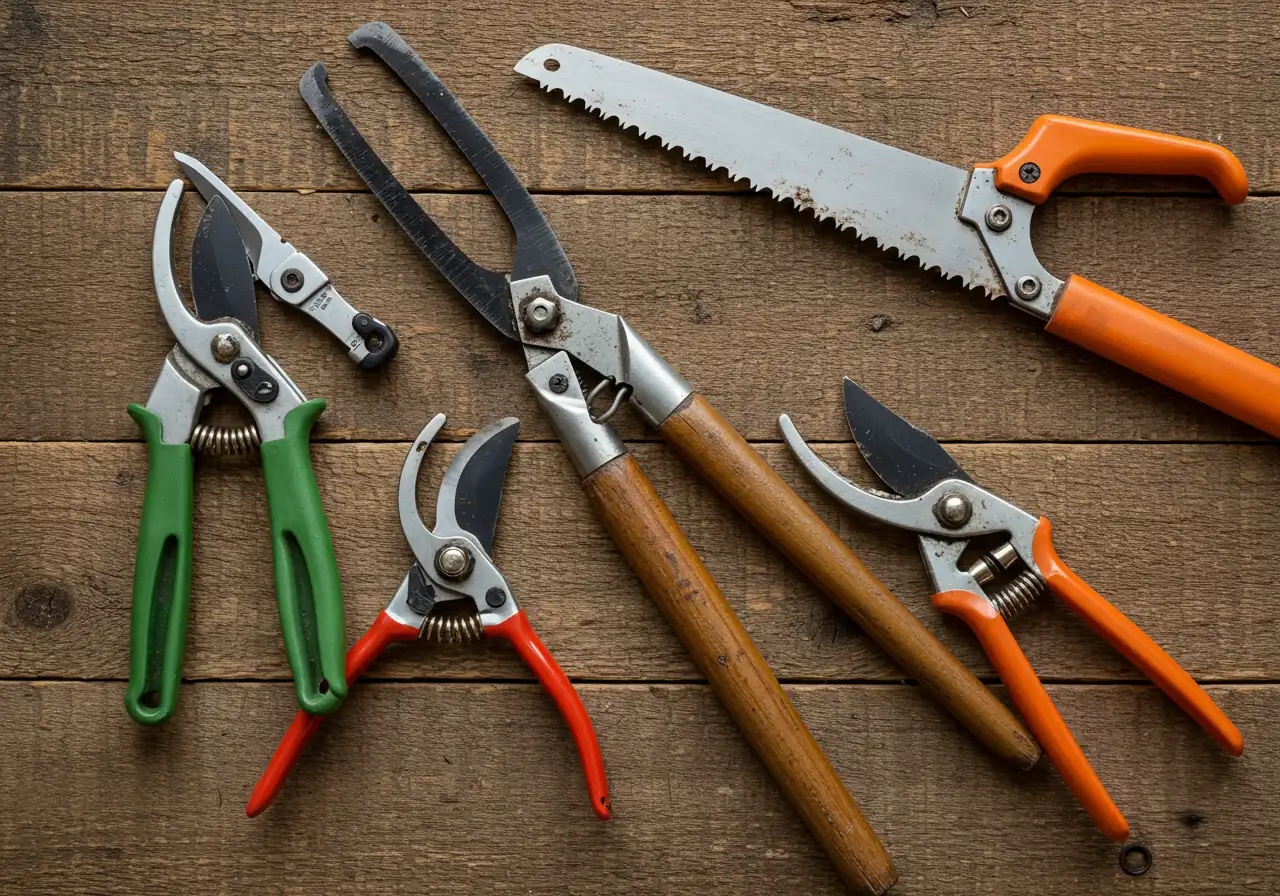
Let's break down the main players in your pruning arsenal:
Hand Pruners (Secateurs): Your Go-To Snips
These are the workhorses for most gardeners, perfect for stems and small branches typically up to ¾ inch thick. Think roses, perennials, and smaller shrub branches. But wait, there's a twist! Hand pruners mainly come in two styles: Bypass and Anvil.
- Bypass Pruners: Imagine scissors. Two curved blades *bypass* each other to make a clean cut.
- Best For: Live, green wood.
- Why: They make a precise, clean slice that heals quickly, minimizing damage to the plant tissue. This is your best bet for most general pruning on living plants.
- Downside: Can sometimes jam if used on tough, dead wood.
- Anvil Pruners: Picture a knife pressing onto a cutting board. A single straight blade closes onto a flat surface (the anvil).
- Best For: Dead or dried-out wood.
- Why: They have more crushing power for cutting through harder, dead material.
- Downside: Can crush tender, live stems, causing damage and slower healing.
Our advice? For most landscaping tasks around Ottawa, especially on living plants, quality bypass pruners are the way to go. Don't skimp here – a good pair feels better in your hand and stays sharp longer. Need help with lawn edges too? Consider our Lawn Care services.
- Bypass Pruners: Imagine scissors. Two curved blades *bypass* each other to make a clean cut.
Loppers: The Big Guns
Think of loppers as long-handled pruners. Those longer handles give you leverage to cut through thicker branches, usually up to 1.5 inches or even more, depending on the model. They also help you reach higher branches without needing a ladder. Perfect for tackling larger shrubs or small tree limbs. Like hand pruners, they come in bypass and anvil styles – choose bypass for clean cuts on live branches. Our Marionville Property Cleanup Service often uses loppers for larger jobs.
Pruning Saws: For Serious Branches
When loppers aren't enough, it's time for a pruning saw. These are designed to cut on the pull stroke, making it easier to saw through branches thicker than 1.5 inches. Handy for tree maintenance or removing larger, unwanted growth. Ensure your property boundaries are respected as per our Privacy Policy when trimming near neighbours.
Hedge Shears: Shaping Experts
With their long, flat blades, these are designed for trimming and shaping hedges and shrubs, giving you those neat, formal lines often seen in Barrhaven neighborhoods. They are *not* meant for cutting thick individual branches – use your pruners or loppers for that. After shaping, remember that tidying up clippings is part of the job; comprehensive Property Clean Up ensures your hard work really shines.
Using Your Tools Wisely:
- Match the Tool to the Task: Don't force small pruners on big branches. You'll dull the blade, potentially break the tool, and likely injure the plant (and maybe yourself!).
- Keep 'Em Clean & Sharp: We covered cleaning earlier, but sharpness is key too! A dull blade crushes stems instead of cutting cleanly.
- Comfort Counts: Look for tools with comfortable, ergonomic grips, especially if you have a lot of pruning to do. Your hands will thank you later! Check our Google Reviews to see what clients say about our efficient work.
Proper pruning is a key part of garden care, promoting healthy growth and flowering. It works best alongside other maintenance like ensuring beds are tidy – something you can tackle yourself or get help with through a Manotick Yard Cleanup Service. Neatly pruned shrubs also look fantastic next to crisp garden edges, a finish you achieve through services like Mulching and Edging. If your urban Ottawa garden needs a complete refresh after pruning, consider a specialized City Garden Clean Up Service. And if tackling the pruning or the whole garden feels like too much, remember there are professional Landscaping & Gardening Services available to help keep your Ottawa landscape looking its best. We also offer Metcalf Garden Clean Up Service nearby.
Scrub-a-Dub-Snip: Your Step-by-Step Guide to Sparkling Clean Pruners
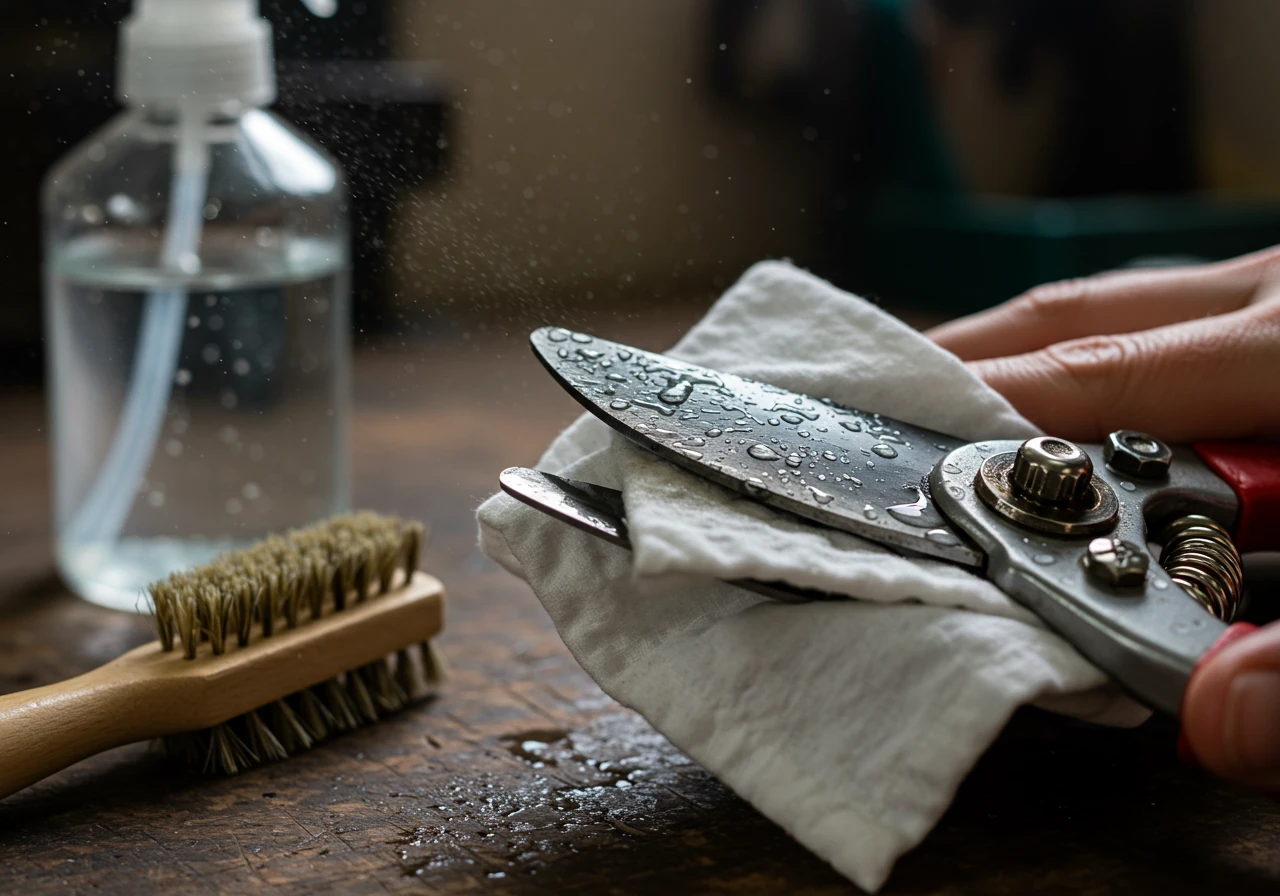
Alright, fellow garden enthusiasts, let's get down to the nitty-gritty of tool care! Keeping your pruners clean isn't just about making them look pretty (though shiny tools *are* satisfying). It's essential for healthy plants and making your landscaping tasks easier. Think of it like washing your hands before cooking – you wouldn't want to spread germs, right? Same goes for your garden! Here’s how to give your snips the spa day they deserve:
Step 1: Banish the Gunk! (Debris Removal)
First things first, get rid of the obvious mess. After each use, especially if things are sappy or muddy, give your pruners a quick wipe-down with a rag. For dried-on sap or stubborn dirt: use a stiff brush or carefully use a putty knife. Pay attention to pivot points. Think of this like the initial sweep during a big yard tidy-up; just like a full Ottawa Property Cleanup Service clears the main debris.
Step 2: Suds Up! (Washing)
Once the worst of the debris is gone, it's time for a bath. Use warm water and a bit of dish soap. Scrub the blades, handles, and joints thoroughly with your brush or a scouring pad. Rinse well with clean water.
Step 3: Disinfect to Protect (Sanitizing)
This is crucial for preventing disease spread. Options include:
- Bleach Solution (1:9): Effective but corrosive (rinse thoroughly!).
- Rubbing Alcohol (70%+): Effective, less corrosive, evaporates quickly. Great for wiping between plants.
- Household Disinfectants: Convenient but check effectiveness.
- White Vinegar: Eco-friendlier, less potent, needs longer contact.
Actionable Tip: If using bleach, *always* rinse thoroughly afterward. Healthy tools are vital for successful Sod Installation pre-care too.
Step 4: Dry, Dry, Dry! (Rust Prevention)
Water is the enemy! Dry your pruners *immediately* and *thoroughly* with a clean cloth. Get into all nooks and crannies. Leave them open to air dry completely before storing. Preventing rust is key after a damp Canadian season, much like tackling soggy leaf piles requires a thorough City Yard Cleanup Service.
Step 5: Lube Job! (Lubrication & Protection)
The final touch! Apply lubricating oil (WD-40, 3-in-1, camellia oil) to the pivot bolt and spring. Open and close pruners to work it in. Wipe blades with an oily rag for a protective film. Wipe off excess. Consider a Thank You to your tools with this step!
Voila! Your pruners are now sparkling clean, sharp (we'll cover sharpening soon!), and ready for action. Making this a regular habit is a small investment that pays off big in plant health and tool longevity. If keeping everything spotless, from tools to beds, feels overwhelming, remember that dedicated services like a Metcalf Yard Cleanup Service or a Marionville Yard Cleanup Service can handle the bigger picture garden maintenance tasks for you. Happy pruning!
Get the Edge: Why Sharp Pruners Make for Happy Plants (and Gardeners!)
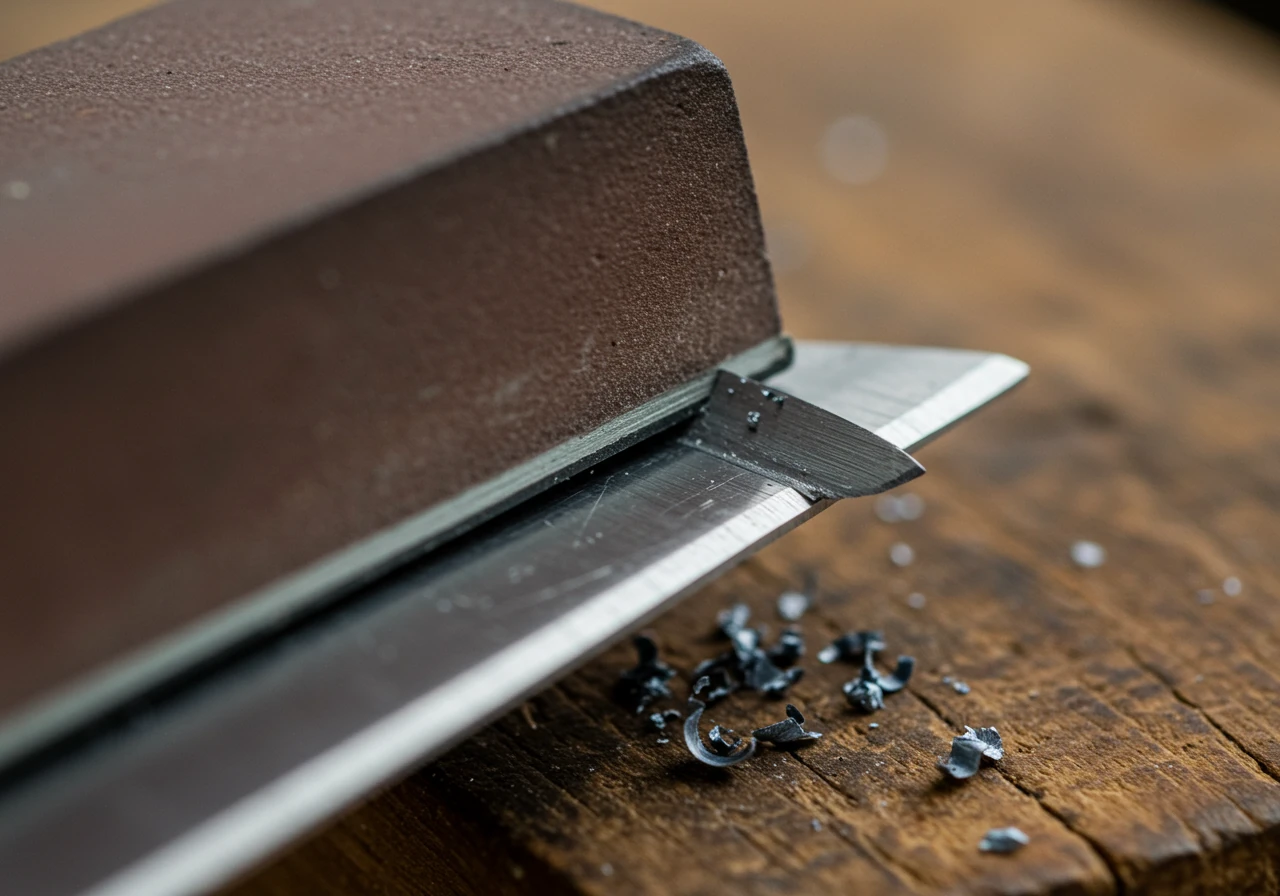
Okay, let's get straight to the *point* – literally! We've talked about keeping your pruning tools clean, but being clean isn't enough. They also need to be *sharp*. Think about it: would you try slicing a ripe Ottawa tomato with a dull butter knife? It wouldn't end well, right? You'd get a squishy mess instead of a clean slice. The same principle applies in your garden.
Why Sharpness Matters (More Than You Think!)
- Happy Plants: Dull blades crush and tear plant tissues. These ragged wounds heal slowly, inviting diseases and pests. Sharp blades make clean cuts that seal quickly, promoting faster healing and reducing stress. This is crucial whether you're tidying existing plants or preparing for a new Beautiful Garden Install.
- Happy Gardeners: Forcing dull pruners is exhausting! Sharp tools require less effort, making cuts smoother, quicker, and easier on your hands and wrists. This makes a *huge* difference, especially in large gardens or when tackling big jobs, perhaps as part of a larger Marionville Property Cleanup Service. Less strain means gardening stays fun!
Sharpen Up! A Quick Guide for Home Gardeners
You don't need fancy equipment! A simple sharpening stone (whetstone) or diamond file works for most hand pruners.
- Safety First! Wear sturdy gloves.
- Clean Up: Ensure blades are clean before sharpening.
- Find the Angle: On bypass pruners, sharpen *only* the beveled (slanted) side. Match the existing angle (usually 20-30 degrees).
- Sharpen Away: Place the stone/file flat against the bevel. Stroke smoothly *away* from the cutting edge, towards the tip, following the curve. Repeat 10-20 times with steady pressure.
- Feel for the Burr: Carefully feel the *flat* side near the edge. A tiny raised ridge (burr) indicates success.
- Banish the Burr: Lay the stone/file flat against the *flat* side and give 1-2 light strokes to remove the burr.
- Wipe & Lube: Wipe clean of filings. Apply oil to prevent rust.
Test on a twig – the cut should be smooth and easy. Regular sharpening is key for effective Ongoing Garden Maintenance. If sharpening or larger pruning feels daunting, especially for big cleanups like those handled by a Metcalf Property Cleanup Service, professional help is available. Sharp tools mean less work, healthier plants, and a happier you!
When to Clean & Sharpen
Clean: Briefly after every use, especially with sappy plants. Deep clean & sanitize before storage and if you suspect disease.
Sharpen: At least once a season (late fall/early spring). Check sharpness periodically during heavy use and touch up as needed.
Avoid These Pitfalls
- Using the wrong tool for the branch size (damages tool & plant).
- Storing tools wet or dirty (invites rust and seizing).
- Forgetting to sanitize between diseased and healthy plants (spreads infection).
- Sharpening the flat side of bypass pruners (ruins the cutting action).
Need help avoiding mistakes? Check our general City Garden Maintenance Service options.
Quick Disinfecting Trick
Keep a small spray bottle of 70% isopropyl alcohol and a rag in your garden bucket. A quick spray and wipe of the blades between pruning different shrubs takes seconds and significantly reduces the risk of cross-contamination, especially important after dealing with visibly sick plants. It's a simple step often included in our Ottawa Yard Cleanup Service protocols.
Tucked Away Safely: Pruner Storage and Seasonal TLC Calendar
Okay, you've scrubbed, sanitized, and sharpened your trusty pruners. High five! But don't just toss them back into the garden shed abyss like forgotten hockey skates after a long Ottawa winter. Giving your tools a proper home and a little seasonal TLC ensures they're always ready for action and last for years, saving you money and frustration – a win-win for gardeners in Vernon or Kenmore!
Tucking Them In: Smart Storage Strategies
- Dry is Key: Store tools in a dry place (garage shelf, basement pegboard, toolbox) – avoid damp shed corners.
- Hang 'Em High (or Safe): Hanging prevents blade damage. If not hanging, use a sheath or wrap in cloth.
- Closed and Secure: Store bypass pruners closed and locked to protect edges and prevent accidents.
- Extra Protection: Before long storage (winter), wipe metal parts with a lightly oiled rag (WD-40, camellia oil) to prevent rust.
Your Pruner's Yearly Pampering Plan: An Ottawa Seasonal Calendar
Seasonal Tool Care Effort (Estimated %)
Relative effort/time spent on tool care throughout the year.
- Late Fall/Winter (Hibernation Prep): *The* time for deep cleaning, thorough sharpening, lubrication, and inspection before storage. Address issues now. Aligns with final tidying, like services from a City Property Cleanup Service.
- Early Spring (Wake-Up Call): Quick check: smooth operation? Still sharp? Add oil? Sharpen if needed! Prime time for pruning many shrubs.
- Growing Season (Summer Maintenance): Wipe down after *each* use. Disinfect regularly (esp. if disease suspected). Keep an eye on sharpness/function. Complements expert Lawn Care.
- Mid-Season Check (Optional but Smart): Mid-summer, re-check sharpness, especially after heavy use. Touch-up sharpen if needed.
Following this routine means reliable tools. Reliable service is also key; see our Terms and Conditions. If seasonal care coincides with bigger needs, consider a City Yard Cleanup Service.
Pruner Power-Up - Quick Tips!
Need the CliffsNotes version for keeping your pruners happy and your plants healthy? Here are your top takeaways for successful gardening in Ottawa and beyond!
- Wipe 'Em Down Regularly: Prevent gunk buildup. Like a pro Ottawa City Property Cleanup Service tackles big messes, you tackle small ones daily.
- Sanitize Smartly: Best defense against disease spread. Alcohol wipes between shrubs work wonders. Healthy plants make great Yard Transformations.
- Stay Sharp for Clean Cuts: Sharp blades = faster healing & less work. Precise cuts mirror careful Landscaping Material Selection.
- Store Dry and Protected: Avoid rust! Dry thoroughly, store dry, oil lightly for storage. Like a Metcalf Garden Clean Up Service preps for off-season.
- Use the Right Tool & Be Responsible: Match tool to task. Responsible gardening prevents disease spread. Respect data Privacy Policy.
FAQs: Your Manotick & Ottawa Area Pruning Care Questions Answered
When is the absolute *best* time to prune most shrubs and trees in the Manotick/Ottawa area?
Ah, the million-dollar question! For many flowering shrubs that bloom on *new* wood (like potentilla or some spireas), late winter or early spring (think late March/April before major growth starts) is perfect. For those blooming on *old* wood (like lilacs or forsythia), prune them right *after* they finish flowering, or you'll snip off next year's blooms! Many trees are best pruned during dormancy in late winter to avoid sap bleeding and disease spread. Timing can vary, so if you're unsure about a specific plant, especially around areas like Greely or Kars, feel free to Contact Us for advice. Find more resources from reliable sources like the City of Ottawa Green Bin Program or the Master Gardeners of Ottawa-Carleton.
Help! I think I pruned too much off my favourite shrub. Is it doomed?
Take a deep breath! It's usually not the end of the world. Most hardy Ottawa-area shrubs are tougher than we think. While over-pruning can stress a plant and might reduce flowering for a season or two, it rarely kills established, healthy shrubs. Give it some TLC – ensure it has adequate water (but don't drown it!), maybe a light dose of appropriate fertilizer, and protect it from other stresses. Resist the urge to prune it again for a while. Patience is key! Think of it as a bad haircut; it'll grow back, maybe just a bit awkwardly at first.
I see some weird spots *after* I pruned. Did my cleaning fail, and what should I do now?
It's possible the disease was already present, or maybe conditions were just right for it to appear. Don't beat yourself up! Even with careful cleaning, sometimes diseases happen. First, prune off the newly spotted branches immediately, cutting back into healthy wood. Make *extra* sure to sanitize your pruners between *every* cut this time (rubbing alcohol wipes are handy). Dispose of the diseased material carefully (see next question). Observe the plant closely. If the problem spreads or you're overwhelmed, professional diagnosis might be needed. You can always Contact Us to discuss the situation.
I'm tidying up after pruning. What's the best way to dispose of the branches and leaves, especially if they might be diseased?
Great question! If you're *sure* the plant material is healthy, smaller twigs and leaves can often be composted or used as mulch (though avoid thick layers of wood chips right against stems). Many Ottawa residents use the City's Green Bin program for yard waste. However, if you suspect *any* disease (like powdery mildew, black spot, or fire blight common in our region), *do not* compost it! Bag it securely and put it out with your regular garbage to prevent spreading issues. Proper disposal is as important as proper pruning. This careful approach extends to choosing quality amendments; good Landscaping Material Selection ensures you're not introducing problems.
Can I hire someone *just* for pruning, or is it usually part of a bigger package? How do I know if I'm getting a fair price?
Absolutely, you can often hire professionals specifically for pruning tasks, especially larger jobs like tree pruning or rejuvenating overgrown hedges in areas like Nepean or Barrhaven. Some companies offer it as a standalone service, while others might bundle it with general garden maintenance. Getting a few quotes is wise. Look for clear descriptions of the work scope. Reputable companies are usually happy to explain their pricing. Sharing your thoughts afterwards, like through an Estimate Feedback form if offered, also helps companies refine their services and ensures transparency for future clients.
Does pruning affect the soil around my plants? Do I need to do anything special afterwards?
Pruning itself doesn't directly impact the soil structure much, but the plant's needs might change slightly. Removing a lot of top growth reduces the immediate demand for water and nutrients. However, healthy recovery *does* depend on good soil! Ensure the soil isn't overly compacted. After pruning, especially if rejuvenating an older shrub, applying a layer of quality compost around the base (but not touching the stem!) can be beneficial. This feeds the soil organisms and provides slow-release nutrients. Good ongoing Soil Preparation practices are always helpful for overall plant health, supporting recovery and future growth in your Manotick garden.
Conclusion: Healthy Tools Mean Healthy, Happy Manotick Gardens
So, there you have it! We've journeyed from recognizing those 'silent spreaders' to mastering the scrub-a-dub-snip and getting the edge with sharpening. It all boils down to a simple truth: taking a little time to care for your pruning tools is one of the *best* investments you can make for your garden's health and beauty, whether you're in Manotick, tending a patch in nearby Embrun, or landscaping anywhere across the Ottawa region.
Remember, clean cuts from sharp, sanitized pruners help prevent nasty plant diseases from crashing your garden party. Plus, sharp tools make *your* job easier – less elbow grease means more time enjoying those gorgeous blooms and lush greenery! Proper cleaning, regular sharpening, and smart storage aren't just chores; they're your secret weapons for a thriving landscape.
Ready to put this into action? Grab those pruners, give them the TLC they deserve using the steps we outlined, and watch your plants thank you.
Feeling a bit overwhelmed or short on time? No worries! If tackling tool maintenance or the pruning itself feels like too much, Clean Yards is here to help. Our professional landscaping and gardening teams can handle everything from precision pruning to full garden cleanups, ensuring your Manotick garden (and tools!) are in tip-top shape.
Give your garden the healthy start it deserves. Implement these tips, or let us handle the hard work!
Request Professional Gardening ServicesWe'd love to hear about your own tool care triumphs too! Feel free to share your experiences or ask more questions.
